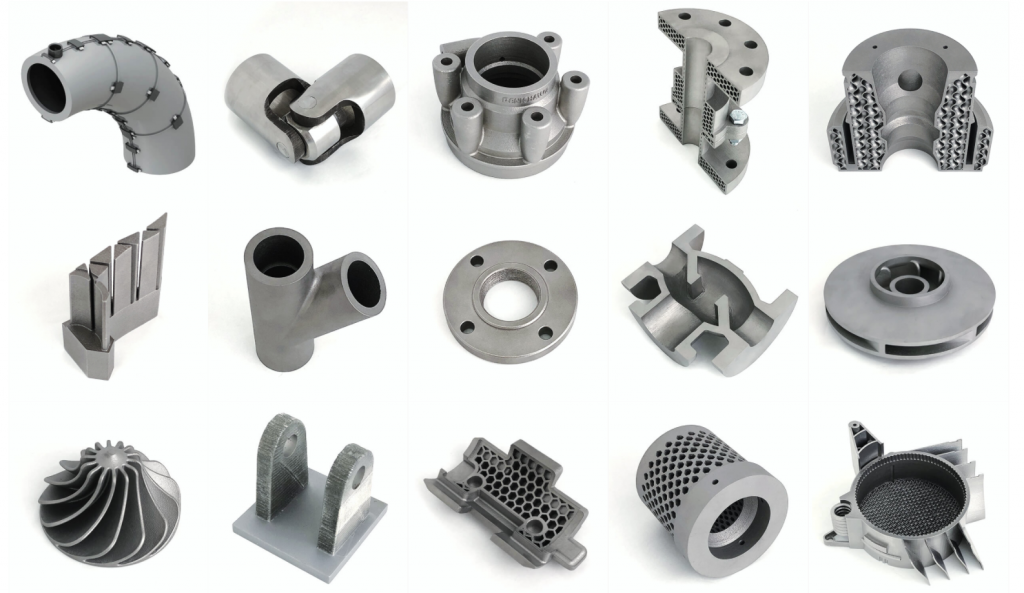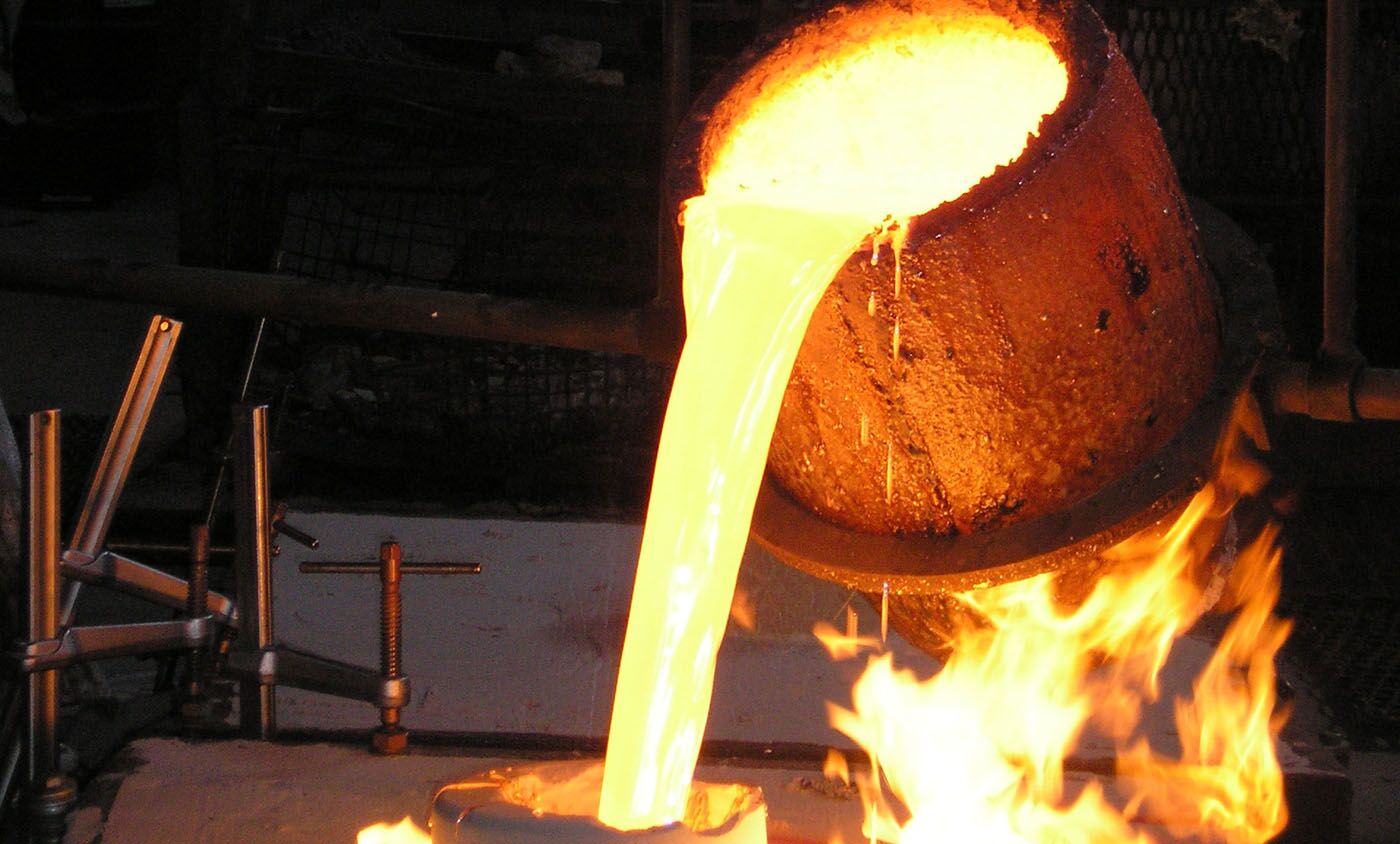How an Aluminum Casting Company contributes to innovation in industries
Understanding the Manufacturing Process and Upkeep Practices for Light Weight Aluminum Shop Products
The manufacturing procedure for light weight aluminum factory items is elaborate and needs a complete understanding of multiple phases. From the melting of light weight aluminum at high temperatures to different casting approaches, each action plays a vital role. In addition, upkeep methods ensure tools remains efficient and products are cost-free from defects. The complexities of these processes and their impact on item quality raise crucial inquiries about ideal methods and ingenious methods in the sector.
Introduction of Light Weight Aluminum Factory Products
Aluminum factory products are critical components in numerous sectors, providing a blend of lightweight strength and corrosion resistance. These products are commonly utilized in sectors such as vehicle, aerospace, and building and construction, where resilience and efficiency are paramount. Light weight aluminum's low thickness makes it an excellent product for applications requiring lowered weight without compromising architectural integrity. The versatility of aluminum permits the development of complex geometries, dealing with varied layout needs.
In addition, aluminum shop products can be tailored with numerous alloys to improve specific residential or commercial properties, such as boosted thermal conductivity or enhanced solidity. Their resistance to oxidation and rust warranties longevity, making them appropriate for both indoor and exterior applications. The mix of these characteristics adds to the expanding choice for aluminum in contemporary production. As industries look for to optimize performance and sustainability, light weight aluminum shop items continue to play an important duty in meeting these demands.
Thawing Refine: Transforming Aluminum
The melting process is a fundamental action in the manufacturing of light weight aluminum shop items, as it transforms strong light weight aluminum right into a molten state suitable for spreading. This procedure generally occurs in a furnace, where scrap aluminum or ingots are heated to temperatures around 660 levels Celsius. The selection of heater-- be it electric, gas, or induction-- impacts the performance and price of melting.
During melting, cautious factor to consider is provided to the removal of pollutants, such as oxides and other impurities, which can adversely affect the quality of the final item. Changes might be included to assist in this filtration procedure, improving the fluidity of the molten metal.
Furthermore, temperature control is vital to assure harmony and protect against overheating, which can bring about oxidation. Consequently, the melting process not just prepares light weight aluminum for casting but additionally plays a substantial role in establishing the stability and buildings of the final factory products.
Casting Strategies in Aluminum Factory
Different spreading techniques are employed in aluminum foundries to create high-quality components, each fit to various applications and specs. Amongst the most commonly made use of techniques are sand casting, pass away casting, and financial investment casting. Sand spreading makes use of a mix of sand and binder to create mold and mildews, enabling for intricate shapes and huge parts (Casting Foundry). Pass away casting, characterized by the high-pressure injection of molten light weight aluminum right into steel molds, creates precise and repeatable components, perfect for mass production. Investment spreading, or lost-wax spreading, involves producing a wax design that is coated in a ceramic covering, making it possible for detailed styles and fine information. Each technique has its benefits; sand spreading is affordable for low-volume production, while die spreading provides effectiveness for high-volume runs. Investment casting is preferred for components requiring remarkable precision and surface area finish. Selecting the proper technique Source depends upon aspects such as manufacturing quantity, component complexity, and product residential properties
Completing Procedures for Aluminum Elements
After casting techniques have shaped the aluminum components, ending up procedures play a significant function in improving their capability and visual allure. These procedures usually consist of machining, surface therapy, and layer applications. Machining entails exact removal of product to achieve wanted dimensions and surface area high quality. This is essential for guaranteeing that components fit flawlessly right into their intended applications.
Surface area treatments, such as anodizing and polishing, are used to enhance corrosion resistance and boost aesthetic attributes. Casting Foundry. Anodizing, in specific, offers a safety oxide layer, making the aluminum much more durable and aesthetically enticing

Upkeep Practices for Durability
Implementing routine maintenance methods is necessary for ensuring the durability of aluminum shop products. Routine evaluations must be carried out to determine deterioration, as very early discovery can stop expensive repair services and expand the life expectancy of elements. Cleaning up equipment and equipment frequently reduces the risk of contamination, which can adversely influence item high quality. Lubrication of moving parts is additionally vital, as it lowers rubbing and wear, improving operational efficiency.
In addition, the execution of a preventive upkeep timetable aids in methodically resolving possible concerns prior to they intensify (Aluminum Casting). This consists of checking for leakages, guaranteeing proper alignment, and adjusting machinery. Team training on appropriate handling and maintenance methods promotes a society of care, which is critical for maintaining product honesty. Recording maintenance tasks supplies valuable understandings right into efficiency trends, allowing for educated decision-making concerning future upkeep techniques.
Quality Assurance and Testing in Light Weight Aluminum Factory Manufacturing
Quality control and screening are critical in light weight aluminum foundry manufacturing, as they assure that end products fulfill specified criteria and customer expectations. This process starts with raw material assessment, guaranteeing that light weight aluminum alloys adhere to called for structures. Throughout the manufacturing cycle, in-process assessments are conducted to keep an eye on criteria like product, stress, and temperature level circulation.
Different examinations-- such as dimensional checks, aesthetic inspections, and non-destructive testing-- are executed to identify any problems as soon as casting is total. Mechanical homes, including tensile toughness and hardness, are evaluated via standard screening approaches.
Adherence to industry standards, such as ISO and ASTM, is crucial for making sure item top quality. Statistical process control strategies are often used to assess manufacturing information and assist in continuous improvement. By applying strenuous top quality control actions, aluminum shops can boost product reliability and decrease waste, eventually resulting in greater consumer contentment and functional efficiency.
Regularly Asked Concerns
What Are the Environmental Influences of Light Weight Aluminum Foundry Operations?
Light weight aluminum factory operations can lead to substantial ecological effects, including air pollution from emissions, water More Info contamination from waste discharge, and energy intake contributing to greenhouse gas discharges, ultimately impacting neighborhood environments and neighborhood health.
Just How Do Light Weight Aluminum Rates Influence Factory Production Decisions?
Light weight aluminum prices greatly influence shop production decisions; higher rates might result in lower output or boosted efficiency steps, while reduced prices can motivate enhanced manufacturing and investment in new technologies to improve competition and profitability.
What Security Actions Are Necessary in Light Weight Aluminum Foundries?
Vital security actions in light weight aluminum factories consist of protective equipment, appropriate air flow to lower breathing of fumes, regular equipment upkeep, training on emergency situation treatments, and adherence to safety and security methods to avoid mishaps and injuries among employees.
Can Light Weight Aluminum Be Recycled, and Just How Is It Processed?
Aluminum can without a doubt be reused. The process involves collection, melting, and changing the product right into brand-new products, substantially decreasing energy usage and ecological effect compared to primary aluminum production while maintaining worldly top quality.
What Prevail Issues in Light Weight Aluminum Spreading and Their Causes?

The production procedure for light weight aluminum foundry products is intricate and calls for a thorough understanding of multiple phases. Bonuses Aluminum foundry items are crucial parts in numerous markets, providing a mix of lightweight strength and rust resistance. The melting process is an essential step in the manufacturing of light weight aluminum foundry items, as it transforms solid light weight aluminum right into a molten state suitable for spreading. Implementing normal maintenance techniques is vital for guaranteeing the longevity of aluminum shop products. Quality control and testing are extremely important in aluminum shop production, as they ensure that last products satisfy defined requirements and consumer expectations.